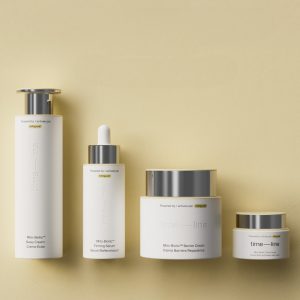Menopause has been grabbing all the headlines lately, but half the world faces a comparable syndrome that is more insidious and less predictable. This disease entity is andropause.
Unlike menopause which usually occurs at a predictable time, men’s testosterone levels decline at different ages and different rates, sometimes slowly, and sometimes precipitously. Testosterone production by the testes reaches adult levels by age 17 (300-1000 ng/dL). The testosterone level remains constant until the fifth decade at which point it declines at a rate of 1.2 percent per year. But in some men, testosterone can drop prematurely and precipitously.
In the Baltimore Longitudinal Study of Aging (2001), it was demonstrated that free testosterone decreased at a constant rate with age and this decline was not related to other causes. Another study demonstrated that poor health may accelerate the natural age-associated decline in testosterone concentrations. One interesting finding is that studies that measured testosterone in the morning were more likely to show a decline in testosterone when compared to studies that measured testosterone in the afternoon. The logic behind this is that older men have little variation in their levels of testosterone throughout the day, unlike young men, who have peaks in their testosterone levels in the morning and troughs in the evenings.
As one ages, there is an increase in fat cells, which in turn causes an elevation in an enzyme called aromatase. This enzyme transforms testosterone to estrogen in the body. Secondarily, estrogen can indirectly cause an increase in a protein called sex-hormone-binding-globulin (SHBG), which binds to free testosterone and prevents its action. This protein will ultimately cause a decrease in testosterone.
At this point you should be asking “Does this apply to me or to my spouse/partner?”
There are theories that demonstrate that a decline in testosterone can cause a decline in mental function. In a study published in the Journal Of Clinical Endocrinological Metabolism in 2002, 407 men were studied ages 50-91 and subsequently demonstrated that those classified as having a low testosterone had lower scores on memory and visuo-spacial performance. The results of several pilot studies have tied low testosterone levels to Alzheimer’s disease, in which there is a build-up of a toxic peptide called beta-amyloid. These studies showed that the toxic effects of this peptide are reduced by testosterone. Interestingly, testosterone levels were lower in Alzheimer’s patients as compared to controls. It is unknown if these low levels cause or are caused by Alzheimer’s disease. According to Dr. Jonathan Wright (co-author of Maximize Your Vitality and Potency), low testosterone levels are associated with moodiness, feeling weak, passivity, and reduced interest in one’s surroundings.
In addition to having an effect on cognitive function, studies have shown correlations between a declining testosterone level and a decline in sexual function as measured by frequency of orgasm or intercourse or by sexual satisfaction (Journal of Clinical Endoclinology 1983). Studies also show that muscle mass, muscle strength and bone mineral density decline with age.
The first step in diagnosing andropause starts with a thorough evaluation at your physician’s office. First, your doctor will obtain a complete medical history from you and perform a series of blood tests to see if you have testosterone deficiency and what may be causing it. Before starting any treatment, however, it is imperative to rule out underlying prostate cancer, just as we would rule out breast cancer in a woman contemplating estrogen therapy. The following are some examples of causes of low testosterone and approaches to them.
First, as discussed, in obese patients, there is excess aromatase enzyme activity causing the testosterone to convert to estradiol causing estrogen overload and testosterone deficiency. Poor liver function is another entity that causes excess estrogen because the liver then cannot detoxify the small amounts of estrogen that even men have. In this case, total testosterone levels would be normal and estrogen levels would be high as much of the testosterone is being changed into estradiol, and the free or usable testosterone levels would be low. This often occurs with excess alcohol consumption.
If you fall into the above category, you should maintain an appropriately high level of aromatase inhibitors in your diet. The recommendation is zinc 80mg daily. A supplement call chrysin, a flavonoid, together with piperine for enhance absorption into the bloodstream, functions as a mild aromatase inhibitor as well. There is a more potent aromatase- inhibiting drug called Arimidex (anastrozole), which can only be prescribed by your doctor. Arimidex is prescribed to estrogen receptor positive breast cancer patients to prevent hormones in the body from aromatizing into estrogen. It has not yet been FDA approved for other indications.
A diet that does not adversely affect liver function should be adhered to. This will of course include an alcohol-free diet, since even small amounts of alcohol are shown to augment estrogen in both men and women. Special attention should be paid to medications affecting the liver and should be reviewed with your doctor in detail. As estrogen excess may be a problem in the setting of liver dysfunction, a substance called indole-3-carbinol (or diindole methane or DIM)) found in special supplements or cruciferous vegetables can help to neutralize the excess estrogen. Most importantly, it is essential that you lose weight as it is the excess aromatase enzyme that is produced by the fat cells that convert the testosterone into the estrogen.
Second, an excess of sex-hormone-binding-globulin can bind much of the free- testosterone and therefore inactivates it. In this case, one will have low free testosterone, normal or even high total testosterone and normal estradiol levels. In addition to following the protocol that inhibits aromatase activity, take saw palmetto which can block the estrogen receptor sites in the prostate cells and therefore reduce the effects of excess estrogen. Saw palmetto also blocks the conversion of testosterone into a hormone, DHT, which has been directly linked to the development of prostate disease.
Methanolic extract of nettle can also inhibit SHBG. It binds to SHBG and therefore blocks its testosterone binding effects, thus allowing more testosterone to be in its natural free state. This root has also been used for benign prostatic hyperplasia. It inhibits the binding of dihydrotestosterone ( DHT), a prostate growth stimulator, to the prostate.
A third cause of low testosterone is failure of the pituitary gland to produce a hormone called leutenizing hormone (LH). One of the functions of LH is to stimulate testosterone production by the testes. In this case, the levels of total testosterone would be low as there is a problem with production.
Fourth, if the testes themselves lose their ability to produce testosetrone, there would be an elevated LH, which would act as a stimulant to produce testosterone. Total testosterone would be low. Patients like these are candidates for testosterone replacement.
Lastly, DHEA, a precursor hormone to testosterone and estrogen, may be low and worsen the consequences of borderline testosterone. The solution here is to supplement DHEA under a doctor’s supervision.
Physicians have prescribed testosterone administered via creams, tablets, patches, lozenges and injections. Such preparations can lead to normalization of testosterone and improvements in muscle strength, libido, mood and bone density. They may also be associated with side effects, so care must be taken to use the right form of replacement and dosage. There is no “one size fits all” approach.
After initiating testosterone, during the first few months, some men may note effects seen in normal puberty, such as acne and gynecomastia. In men over the age of 50, worsening of prostate symptoms may occur, although sometimes they improve. If, however, the testosterone is not taken in excess and used to maintain a normal serum testosterone, there is no reason to believe that these men are more likely to develop these conditions than men who produce their own natural testosterone. Nevertheless, a PSA and a digital rectal exam and close monitoring of hormone levels must be adhered to.



